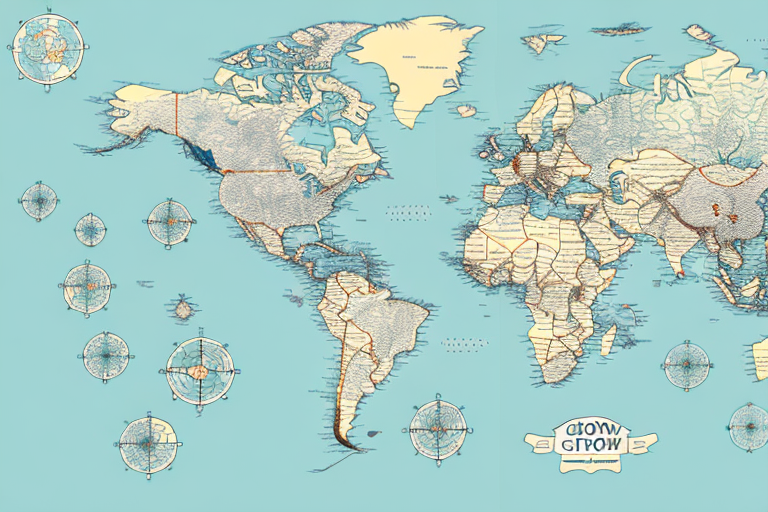Introduction to USPS Zones
Understanding USPS Zones is essential for anyone involved in shipping packages. USPS Zones determine the distance between the origin and destination of a package, directly affecting shipping costs. This zoning system not only applies to domestic shipping within the United States but also to international shipments.
What are USPS Zones?
The USPS Zones system categorizes the distance a package travels into specific zones. Each zone corresponds to a range of distances, with Zone 1 being the closest and Zone 8 being the farthest. The zone number is used to calculate shipping rates, where packages traveling longer distances (higher zones) incur higher shipping costs.
History of USPS Zones
The concept of distance-based pricing in USPS shipping dates back to the early 1800s. The current Zones system was introduced in the early 2000s to streamline the pricing structure. In 2015, USPS simplified the system by reducing the number of zones from nine to eight, enhancing clarity for customers. Advances in technology and software have further refined zone calculations, ensuring accurate and fair pricing.
The Role of USPS Zones in Shipping Costs
Cost Determination Based on Zones
USPS Zones play a critical role in determining the cost of shipping a package. The distance a package must travel, as indicated by its zone, directly influences the shipping rate. For example, a package traveling within Zone 1 will generally cost less than one traveling to Zone 8. According to the USPS 2023 pricing guide, shipping from Zone 1 to Zone 8 can see cost increases of up to 150%, depending on package weight and service level.
Impact on Delivery Times
The zone of a package also affects its delivery time. Packages sent to closer zones (Zones 1-4) typically arrive within 1-3 business days, while those sent to farther zones (Zones 5-8) may take up to 5 business days. Choosing the appropriate service level based on zones can help meet delivery expectations effectively.
Calculating USPS Zones
Zone Calculation Method
USPS calculates zones based on the distance between the origin and destination ZIP codes. Each ZIP code is assigned to a specific zone relative to the origin ZIP code. The USPS Zone Lookup tool can be used to identify the zone for a particular destination. Factors such as package weight and dimensions can further influence the final shipping cost.
Tools to Determine Shipping Zones
To easily find out the zone of a destination, use the USPS Zone Lookup tool available on the official USPS website. By entering the origin and destination ZIP codes, the tool provides the corresponding zone, helping you determine the most cost-effective shipping options.
Strategies to Optimize Shipping Costs
Choosing the Right Packaging
Selecting the appropriate box size and packaging materials can significantly reduce shipping costs. Opting for smaller, lightweight boxes minimizes the distance and weight, lowering the zone-based cost. Additionally, proper packaging ensures the safety of your items during transit.
Using USPS Flat Rate Boxes
USPS Flat Rate boxes offer a cost-effective solution by pricing based on box size rather than distance. This is advantageous when shipping to higher zones, as the rate remains consistent regardless of the destination. For more information, visit the USPS Flat Rate boxes page.
Utilizing Shipping Tools
Utilizing USPS’s Click-N-Ship service enables you to print shipping labels and schedule pickups from your location, saving time and potentially qualifying for discount rates. Leveraging these tools can streamline the shipping process and reduce overall costs.
Common Mistakes When Using USPS Zones
Incorrect Package Measurement
Miscalculating package weight or dimensions can lead to inaccurate shipping costs. Always use a reliable scale and measuring tape to ensure your package meets the specified requirements for the chosen service and zone.
Misunderstanding Zone Pricing
Assuming all packages have the same shipping cost regardless of destination can result in unexpected expenses. It’s crucial to verify zone-specific rates to avoid overpaying for shipping services.
Comparing USPS with Other Shipping Carriers
USPS vs UPS vs FedEx
When comparing USPS to carriers like UPS and FedEx, it’s important to consider factors such as cost, delivery speed, and service options. While UPS and FedEx might offer faster delivery times and more robust tracking, USPS often provides more affordable rates, especially for lighter packages and non-urgent shipments. According to a 2023 Statista report, USPS remains the most cost-effective option for small businesses and individual shippers.
International Shipping with USPS Zones
Understanding International Zones
USPS also uses zones for international shipments, determining costs based on the distance between the United States and the destination country. Each country is assigned a specific zone, which impacts the overall shipping rate and delivery time.
Tips for International Shipping
To optimize international shipping costs, consider using USPS Flat Rate International boxes, which offer predictable pricing. Additionally, ensure all customs documentation is accurately completed to avoid delays and additional fees. For more details, visit the USPS International Shipping page.
Impact of External Factors on USPS Zones
The COVID-19 Pandemic
The ongoing COVID-19 pandemic has significantly impacted USPS Zones and shipping costs. Increased demand for online shopping and shipping services has led to higher volume and occasional delays in delivery times. According to a 2023 report by American Progress, USPS has implemented additional measures to handle increased shipping volumes, although some delays may still occur.
Economic Factors
Fluctuations in fuel prices and economic conditions can also affect shipping costs. USPS periodically adjusts shipping rates to account for these changes, ensuring the sustainability of their services.
Conclusion
Understanding USPS Zones is crucial for managing and optimizing shipping costs. By accurately determining zones, selecting appropriate packaging, and utilizing USPS tools and services, shippers can ensure cost-effective and timely delivery of their packages. Avoiding common mistakes and comparing USPS with other carriers further enhances shipping efficiency. Whether shipping domestically or internationally, leveraging the USPS Zones system can significantly impact your shipping budget and customer satisfaction.






















